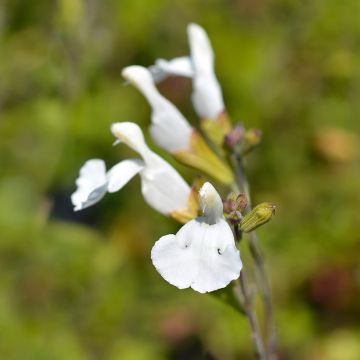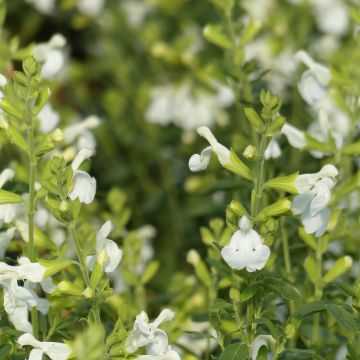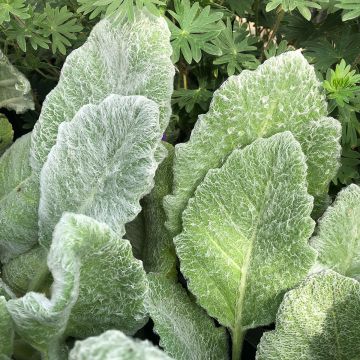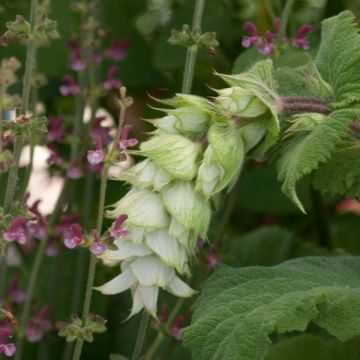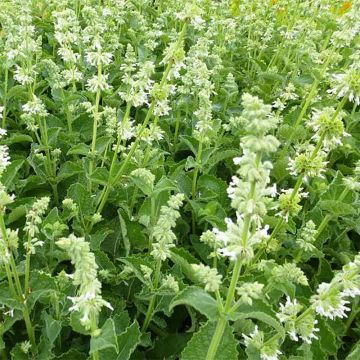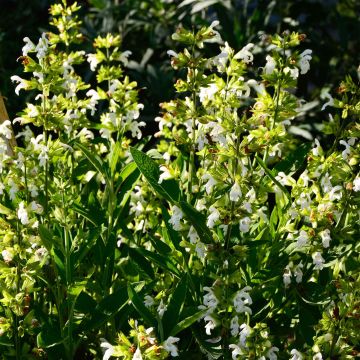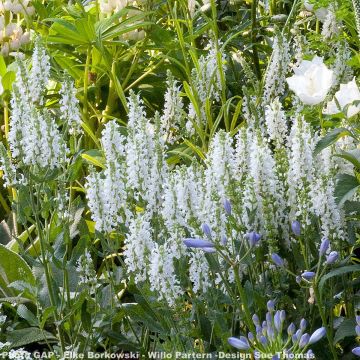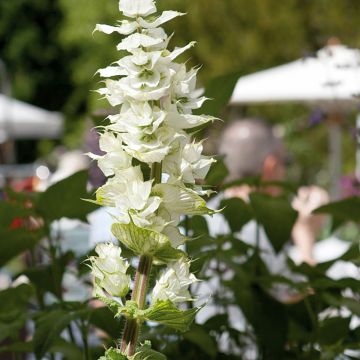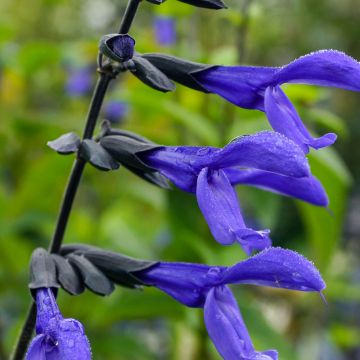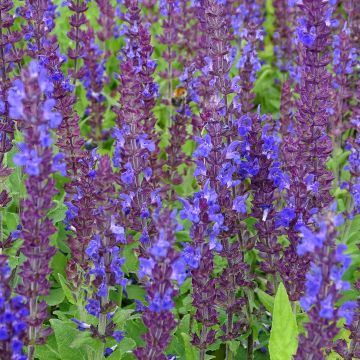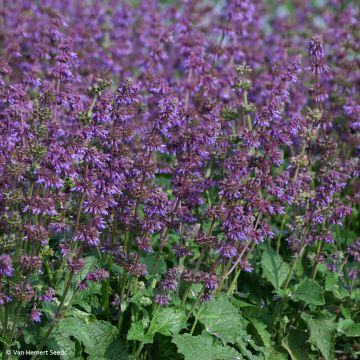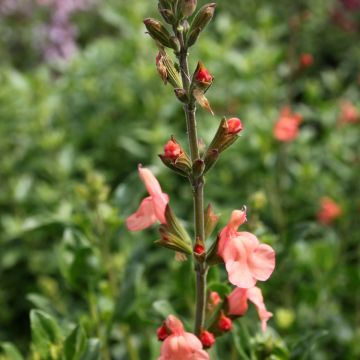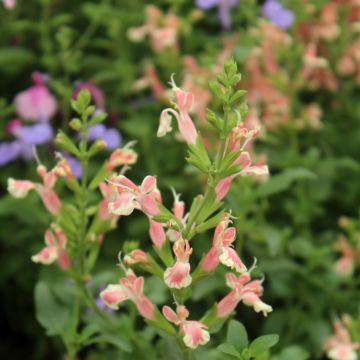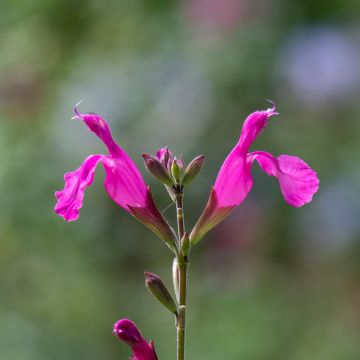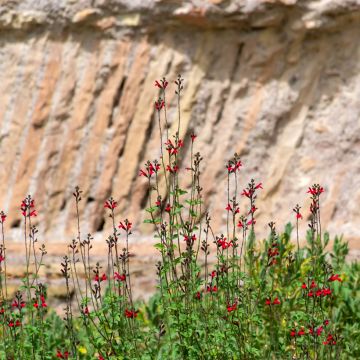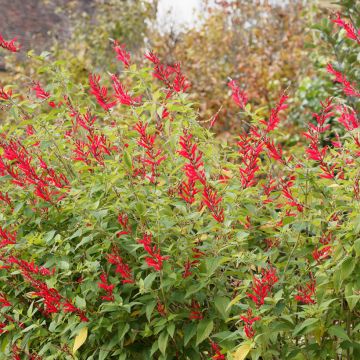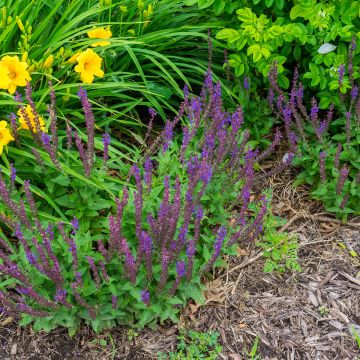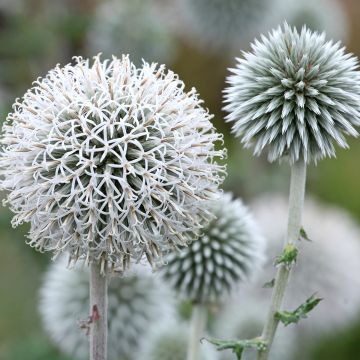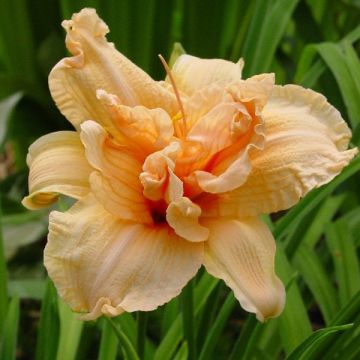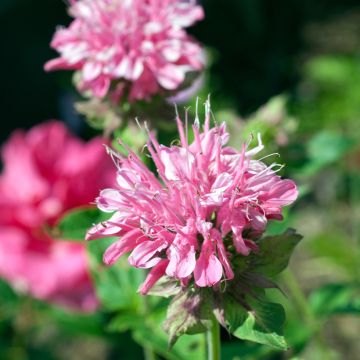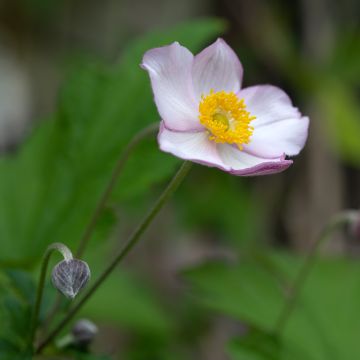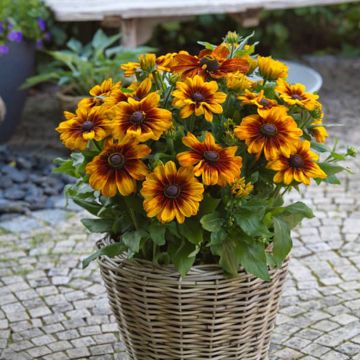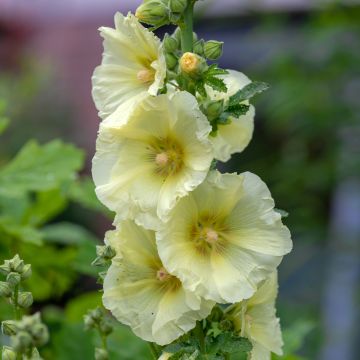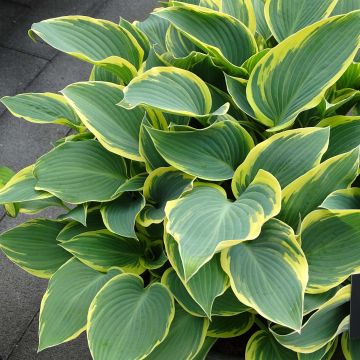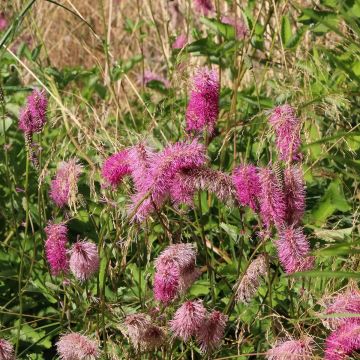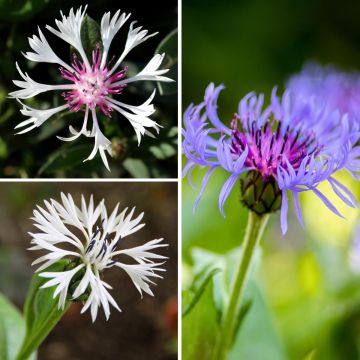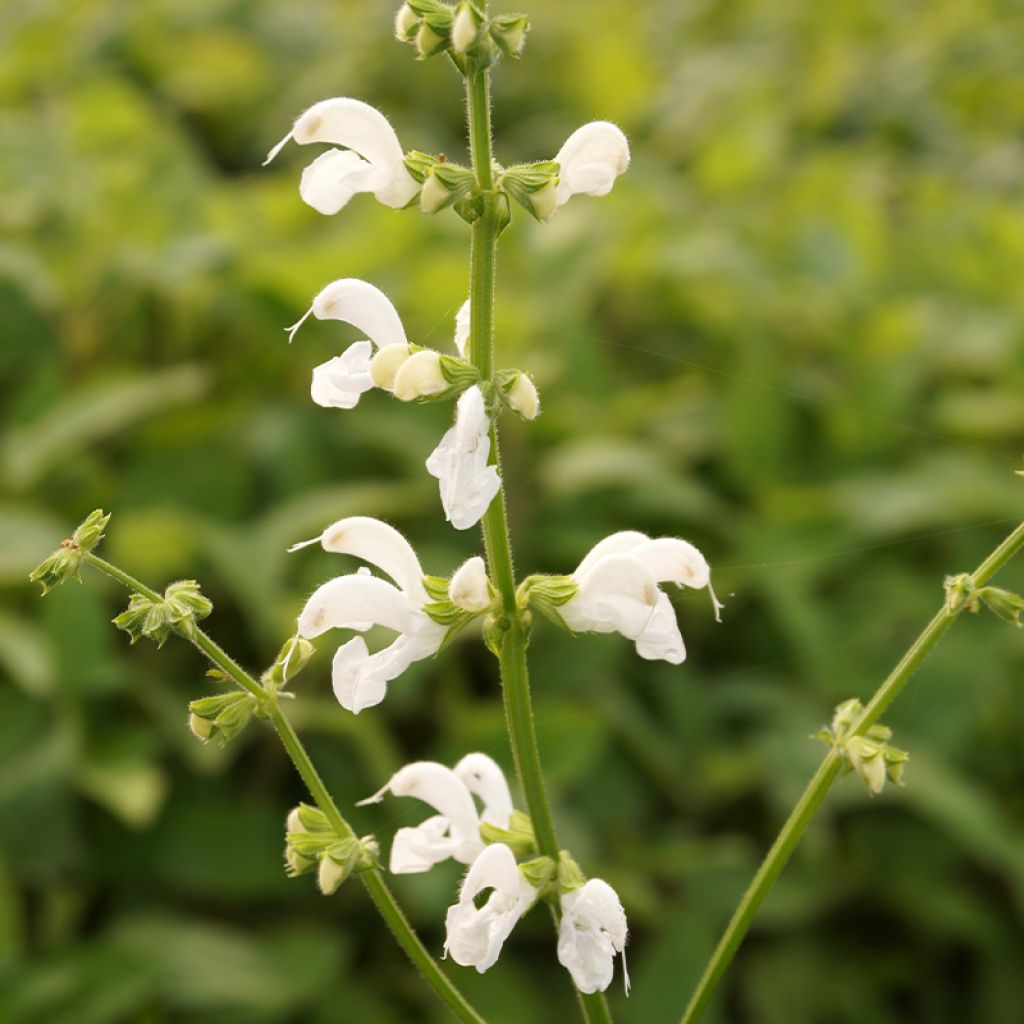

Salvia pratensis Swan Lake - Sauge des près
Salvia pratensis Swan Lake - Meadow Sage
Salvia pratensis Swan Lake
Meadow Sage, Wild Sage, Meadow Clary
Poor quality young plant Looks like it won't survive replanting
Marie, 17/10/2024
Why not try an alternative variety in stock?
View all →This plant carries a 12 months recovery warranty
More information
We guarantee the quality of our plants for a full growing cycle, and will replace at our expense any plant that fails to recover under normal climatic and planting conditions.
From €5.90 for pickup delivery and €6.90 for home delivery
Express home delivery from €8.90.
Delivery to Corse prohibited: UE law prohibits the import of this plant from mainland France to Corse as part of the fight against Xylella fastidiosa. Please accept our sincere apologies.
More information
Does this plant fit my garden?
Set up your Plantfit profile →
Description
The Salvia pratensis 'Swan Lake' is a beautiful variety of meadow sage with pure white flowers that bring lightness and a touch of brightness to summer borders. This plant is an excellent garden perennial, floriferous, hardy, water-efficient, and cold-resistant. With its elegant weed-like appearance, it is ideal for borders or mass plantings, in full sun or partial shade.
Widespread from Western Europe to the Caucasus, meadow sage is a very hardy perennial species, that tolerates sun and drying soils. The 'Swan Lake' variety has the same ease of cultivation, but its flowers are larger and a beautiful pure white. Its leafy stems form a clump that can measure 40 cm (16in) in diameter. The plant blooms from late May to July in successive waves, depending on the climate. It produces numerous multiflorous spike-like inflorescences, carried at a height of 50 cm, with bilabiate flowers. They are highly valued by butterflies and bees. The leaves are ovate to oblong, rough, with crenate margins, more or less large, forming a beautiful vegetation. They are aromatic when crushed. It is a deciduous plant in winter, with vegetation emerging from the ground in spring.
The 'Swan Lake' meadow sage is vigorous enough to outcompete weeds. Like its blue ancestor, this plant excels on slopes, which help to stabilise this plant's deeply anchored roots, and allow it to draw moisture, even during heatwaves. This is a very resistant plant, which tolerates prolonged periods of drought and spartan growing conditions. This plant well tolerates limestone, even growing on chalky hillsides, enduring harsh winters without weakening. In borders, associate it with clary sage, purple sage, romantic roses, and Nepeta x faassenii, Lychnis coronaria...
With over 900 species of annuals, perennials, and soft-wooded shrubs, distributed around the globe, except for very cold regions and the tropical forest, the Salvia genus is the richest in the family of Lamiaceae. The name Salvia, which dates back to Roman times, derives from the Latin salvus "healthy" in reference to the medicinal properties of common sage.
Report an error about the product description
Salvia pratensis Swan Lake - Meadow Sage in pictures
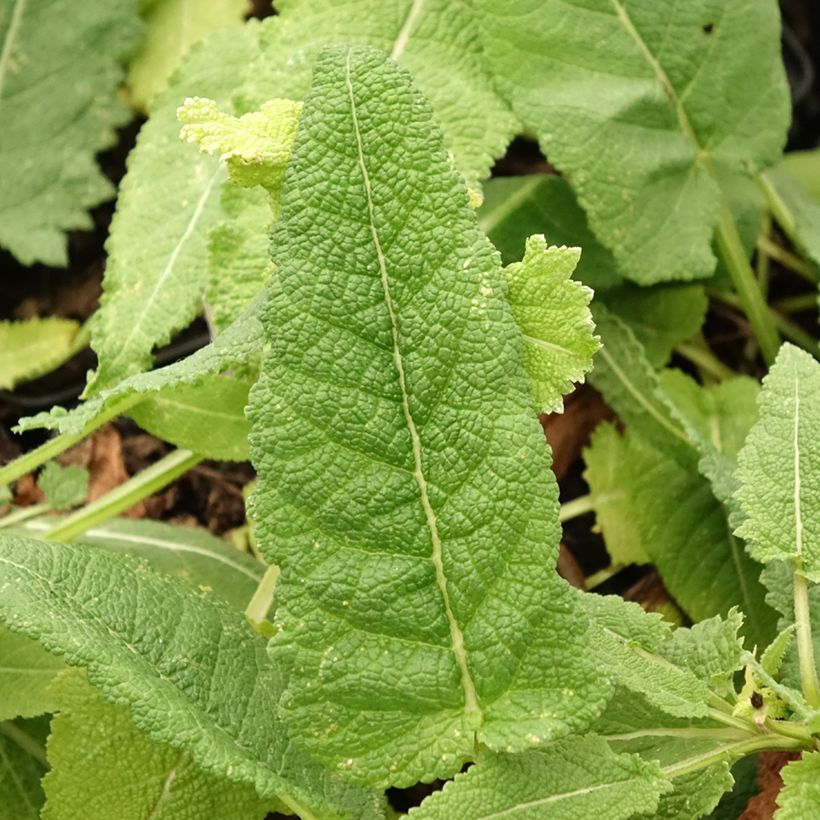

Flowering
Foliage
Plant habit
Botanical data
Salvia
pratensis
Swan Lake
Lamiaceae
Meadow Sage, Wild Sage, Meadow Clary
Cultivar or hybrid
Other Salvia - Sage
Planting and care
Install the 'Swan Lake' sage in an ordinary, even poor and rather chalky soil, but above all well-draining. This plant tolerates some drought. It does not appreciate heavy and waterlogged soils in winter, which can harm its hardiness. Plant 'Swan Lake' sage in a sunny or semi-shaded exposure. This is an easy to grow, and very floriferous plant. Fertilize in spring and in April, cut all the branches in half. After flowering, cut the faded floral stems to stimulate and prolong flowering. To preserve the vitality of the sage, it is good to divide the plant after 3 years. Plant the new plants in well-prepared soil. In order to improve slightly poor soil, mix in some horticultural compost.
Planting period
Intended location
Care
-
, onOrder confirmed
Reply from on Promesse de fleurs
Summer flowering perennials
Haven't found what you were looking for?
Hardiness is the lowest winter temperature a plant can endure without suffering serious damage or even dying. However, hardiness is affected by location (a sheltered area, such as a patio), protection (winter cover) and soil type (hardiness is improved by well-drained soil).

Photo Sharing Terms & Conditions
In order to encourage gardeners to interact and share their experiences, Promesse de fleurs offers various media enabling content to be uploaded onto its Site - in particular via the ‘Photo sharing’ module.
The User agrees to refrain from:
- Posting any content that is illegal, prejudicial, insulting, racist, inciteful to hatred, revisionist, contrary to public decency, that infringes on privacy or on the privacy rights of third parties, in particular the publicity rights of persons and goods, intellectual property rights, or the right to privacy.
- Submitting content on behalf of a third party;
- Impersonate the identity of a third party and/or publish any personal information about a third party;
In general, the User undertakes to refrain from any unethical behaviour.
All Content (in particular text, comments, files, images, photos, videos, creative works, etc.), which may be subject to property or intellectual property rights, image or other private rights, shall remain the property of the User, subject to the limited rights granted by the terms of the licence granted by Promesse de fleurs as stated below. Users are at liberty to publish or not to publish such Content on the Site, notably via the ‘Photo Sharing’ facility, and accept that this Content shall be made public and freely accessible, notably on the Internet.
Users further acknowledge, undertake to have ,and guarantee that they hold all necessary rights and permissions to publish such material on the Site, in particular with regard to the legislation in force pertaining to any privacy, property, intellectual property, image, or contractual rights, or rights of any other nature. By publishing such Content on the Site, Users acknowledge accepting full liability as publishers of the Content within the meaning of the law, and grant Promesse de fleurs, free of charge, an inclusive, worldwide licence for the said Content for the entire duration of its publication, including all reproduction, representation, up/downloading, displaying, performing, transmission, and storage rights.
Users also grant permission for their name to be linked to the Content and accept that this link may not always be made available.
By engaging in posting material, Users consent to their Content becoming automatically accessible on the Internet, in particular on other sites and/or blogs and/or web pages of the Promesse de fleurs site, including in particular social pages and the Promesse de fleurs catalogue.
Users may secure the removal of entrusted content free of charge by issuing a simple request via our contact form.
The flowering period indicated on our website applies to countries and regions located in USDA zone 8 (France, the United Kingdom, Ireland, the Netherlands, etc.)
It will vary according to where you live:
- In zones 9 to 10 (Italy, Spain, Greece, etc.), flowering will occur about 2 to 4 weeks earlier.
- In zones 6 to 7 (Germany, Poland, Slovenia, and lower mountainous regions), flowering will be delayed by 2 to 3 weeks.
- In zone 5 (Central Europe, Scandinavia), blooming will be delayed by 3 to 5 weeks.
In temperate climates, pruning of spring-flowering shrubs (forsythia, spireas, etc.) should be done just after flowering.
Pruning of summer-flowering shrubs (Indian Lilac, Perovskia, etc.) can be done in winter or spring.
In cold regions as well as with frost-sensitive plants, avoid pruning too early when severe frosts may still occur.
The planting period indicated on our website applies to countries and regions located in USDA zone 8 (France, United Kingdom, Ireland, Netherlands).
It will vary according to where you live:
- In Mediterranean zones (Marseille, Madrid, Milan, etc.), autumn and winter are the best planting periods.
- In continental zones (Strasbourg, Munich, Vienna, etc.), delay planting by 2 to 3 weeks in spring and bring it forward by 2 to 4 weeks in autumn.
- In mountainous regions (the Alps, Pyrenees, Carpathians, etc.), it is best to plant in late spring (May-June) or late summer (August-September).
The harvesting period indicated on our website applies to countries and regions in USDA zone 8 (France, England, Ireland, the Netherlands).
In colder areas (Scandinavia, Poland, Austria...) fruit and vegetable harvests are likely to be delayed by 3-4 weeks.
In warmer areas (Italy, Spain, Greece, etc.), harvesting will probably take place earlier, depending on weather conditions.
The sowing periods indicated on our website apply to countries and regions within USDA Zone 8 (France, UK, Ireland, Netherlands).
In colder areas (Scandinavia, Poland, Austria...), delay any outdoor sowing by 3-4 weeks, or sow under glass.
In warmer climes (Italy, Spain, Greece, etc.), bring outdoor sowing forward by a few weeks.

































